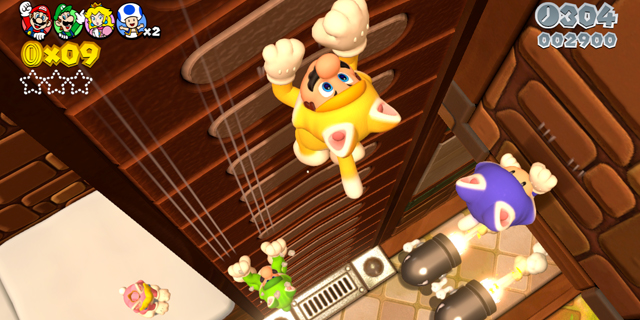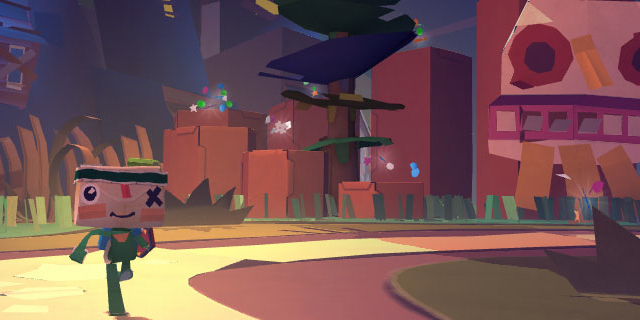
When faced with following up Super Mario Galaxy as the flagship home 3D platformer, developer EAD Tokyo made a product out of cobbling together disparate smaller ideas. There’s the new (Cat Mario), the recent (local multiplayer), the classic (the overworld) and the callback (character abilities). This, meshed with the 3D Land aesthetic, sounds like it would be promising but uneven, a pile of good things that just can’t come together in a logical way.
But no, Super Mario 3D World is great both in parts and as a whole. READ MORE

Media Molecule, a developer known for putting its most creative tools into the hands of the players, is a factory of imaginative design. The LittleBigPlanet games have done well to demonstrate its talents, but are more a showcase for its fans and not of its own abilities as a studio. Tearaway is the first game from them that infuses their design philosophies and creative ambitions into a title that feels like a passion project. Most importantly of all, it’s probably the best demonstrations of the Vita as a system. READ MORE

Knack, from Sony’s Japan Studio, is the company’s attempt to bring a colorful, family-friendly action game to the PlayStation 4’s launch. Built around a character that can change size, its visual effects are made to show off the hardware’s ability to process lots of little parts at once. Whether it makes for a compelling game is, of course, another matter entirely. READ MORE

The next generation of video games is here! At least, that’s what I’ve been led to believe. Thanks to the increased relevance of PC gaming, we aren’t making a huge generational shift; this is more of a small leap with two more capable devices. With these new systems now out in the wild, I thought I would take this opportunity to reflect back on the past eight years of PS3 and Xbox 360, my experiences with some memorable titles and what I’ve learned most from the games that, in my mind, defined the generation.
READ MORE

A couple of years ago I discussed a pair of Discworld-themed games that attempted to adapt Terry Pratchett’s hilarious fantasy satire universe to cardboard and wood. Of the two, I definitely felt that Martin Wallace’s Ankh-Morpork was the superior design, so I was thrilled to learn that he would be designing more games using the characters and world that I love so dearly. The second such offering, The Witches, has finally arrived. How does it stand up to its predecessor? READ MORE
























